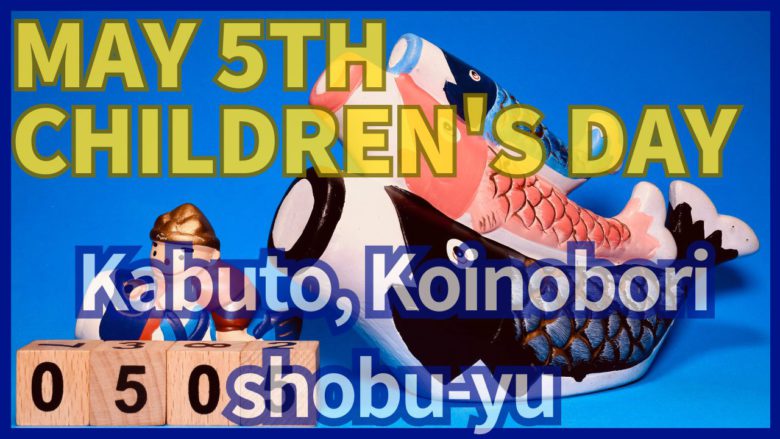Today, May 5th, is a day of great cultural significance in Japan, known by several names: Children’s Day, Tango no Sekku, and Shobu no Sekku.
This day is dedicated to celebrating the health, happiness, and well-being of children. It is a time when families come together to wish for the growth and success of their young ones.
Tango no Sekku / Boys’ Day

Tango no Sekku, also referred to as Boys’ Day, has a long history and is marked by the display of samurai helmets and armor, symbolizing strength and valor, and the flying of carp-shaped kites, called “koinobori.”
The koinobori is a metaphor for the aspiration that children will grow up strong and capable.
Additionally, families with boys display miniature samurai figures and helmets, praying for their sons to grow up healthy and strong.
Shobu no Sekku / Iris Festival

Shobu no Sekku, or the Iris Festival, is another aspect of this day, where irises are celebrated for their purifying and protective properties.
It is believed that the sweet flag (a plant closely associated with irises) can ward off evil spirits.
Traditional customs include taking shobu-yu, a bath infused with iris leaves, which is thought to promote health and prevent misfortune.
Together, these celebrations on May 5th form a vibrant part of Japan’s cultural calendar, offering a moment for reflection on the importance of the next generation’s growth and happiness.
Children’s Day in Tokyo
In Tokyo, Children’s Day is celebrated with a plethora of vibrant events and traditional decorations that offer a fascinating insight into Japanese culture.
This day, observed on May 5th, is dedicated to the health and happiness of children.
Key attractions include the display of samurai armor, flying carp streamers (koinobori), and the use of iris leaves and roots (shobu) for purification and protection.
The samurai armor, or “kabuto,” is a striking symbol of strength and valor, often displayed in homes to inspire these qualities in children.
This tradition dates back to the samurai era and serves as a reminder of the bravery and honor associated with Japan’s legendary warriors.
Visitors have the opportunity to see these intricate and historic pieces in various museums throughout Tokyo or in special exhibitions dedicated to Children’s Day.
Some families even participate in workshops where they can learn more about the craftsmanship behind the armor and make their own mini kabuto.
Another eye-catching sight during this time is the koinobori, large carp-shaped windsocks, traditionally flown outside homes and across riverbanks to symbolize family hopes for children to grow up strong and resilient, just like carp swimming upstream.
The colors and sizes of the koinobori often represent different family members. The largest, usually black or blue, symbolizes the father; the next, red or pink, the mother; and subsequent smaller carp, the children.
The vibrant streams of flying carp against the backdrop of Tokyo’s skyline create a mesmerizing view.
Lastly, the custom of using shobu (iris) during Children’s Day involves decorating homes with iris leaves and roots, believed to ward off evil spirits and promote health and longevity. The shape of the iris leaves, resembling a sword blade, also ties back to the samurai theme, symbolizing protection and courage.
Families might take a relaxing bath infused with iris leaves, known as “shobu-yu,” to soak in the good fortune and strength.
Summary
For visitors to Tokyo during this festive time, engaging in these traditions offers a unique way to connect with Japanese culture and celebrate the joy and potential of youth.
Whether marveling at the display of samurai armor, enjoying the colorful dance of koinobori in the sky, or experiencing the fragrant ritual of shobu, Children’s Day in Tokyo is a memorable experience that beautifully blends history, nature, and family values.


